
Ittie Kinney Reno (May 17, 1862 - June 5, 1941) was a novelist and social leader.

Ittie Kinney Reno (May 17, 1862 - June 5, 1941) was a novelist and social leader.
Ittie Kinney Reno was born in Nashville, Tennessee, on May 17, 1862. She was the daughter of Col. George S. Kinney, of Nashville. She was a high-strung, imaginative child, remarkably bright and precocious, and while still very young she was sent to a convent in Kentucky, where she remained until her education was completed. [1]
She was graduated with first honors, and her valedictory was delivered in the form of an original poem. Her debut was marked by the brilliance that wealth and social influence confer, and soon she became one of the belles of Tennessee's capital. [1]
In the summer of 1889, she began to write a romance, entirely for self-amusement, with no thought of publication. She kept her work a secret till its completion, and then she laughingly gave it to her mother for criticism. Her parents insisted on publication, but Réno declined. Finally, she allowed her father to submit her manuscript to his friend, Hon. Henry Watterson, and to abide by his decision. Watterson read and pronounced it "a genuine southern love story, full of the fragrance of southern flowers and instinct with the rich, warm blood of southern youth." He gave the young author some letters to eastern publishers, and her first novel, Miss Breckenridge, a Daughter of Dixie (Philadelphia, 1890), was published. It proved successful, and within a few months it had passed through five editions. Her second book, An Exceptional Case (Philadelphia, 1891), it also proved to be a success. [2] [1]
In 1903, she won the second prize offered by the editor of the American Home Magazine , published in New York, in a story contest, in which magazine and newspaper writers in all parts of the country were competing. As a consequence, Reno was placed on the regular staff of contributors to the magazine. Her story was "Rattlesnake Jim". [3]
In 1908, she won the US$500 offered as first prize in a story contest by Everybody's Magazine . In the contest, 1.000 manuscripts were submitted. [4]
On May 21, 1885, [5] she married Robert Ross Réno of Harrisburg, Tennessee, [2] only child of M. A. Réno, Major of the 7th Cavalry Regiment, famous for the defense of his men during two days and nights of horror, from the overwhelming force of Sioux, who the day before had massacred Custer's entire battalion. Through his mother, Robert Ross Reno was related to some of the oldest families in Pennsylvania. He was one of the heirs of Philippe Francois Renault (anglicized Reno), who arrived in Tennessee with Lafayette, and who left an estate valued at $200,000,000 ($200,000,000 in 1893 are $5,183,398,623.61 in 2017). [6] For several years after her marriage, Reno led the life of a young woman of fashion and elegance. Reno lived in luxurious surroundings in a sumptuous home on Capitol Hill. [1]
She died on June 5, 1941, and is buried at Cave Hill Cemetery, Nashville. [7]
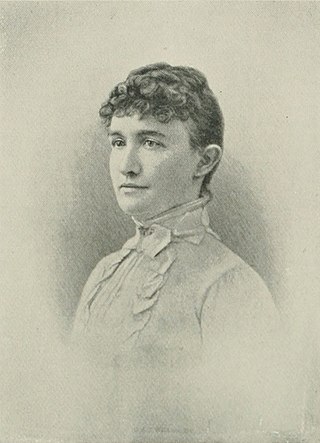
Mary Noailles Murfree was an American author of novels and short stories who wrote under the pen name Charles Egbert Craddock. She is considered by many to be Appalachia's first significant female writer and her work a necessity for the study of Appalachian literature, although a number of characters in her work reinforce negative stereotypes about the region. She has been favorably compared to Bret Harte and Sarah Orne Jewett, creating post-Civil War American local-color literature.
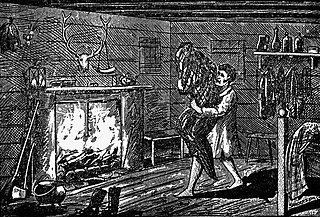
The Bell Witch or Bell Witch Haunting is a legend from Southern United States folklore, centered on the 19th-century Bell family of northwest Robertson County, Tennessee. Farmer John Bell Sr. resided with his family along the Red River in an area currently near the town of Adams. According to legend, from 1817 to 1821, his family and the local area came under attack by a mostly invisible entity that was able to speak, affect the physical environment, and shapeshift. Some accounts record the spirit also to have been clairvoyant and capable of crossing long distances with superhuman speed.

Sulphur Dell, formerly known as Sulphur Spring Park and Athletic Park, was a baseball park in Nashville, Tennessee, United States. It was located just north of the Tennessee State Capitol building in the block bounded by modern-day Jackson Street, Fourth Avenue North, Harrison Street, and Fifth Avenue North. The ballpark was home to the city's minor league baseball teams from 1885 to 1963. The facility was demolished in 1969.
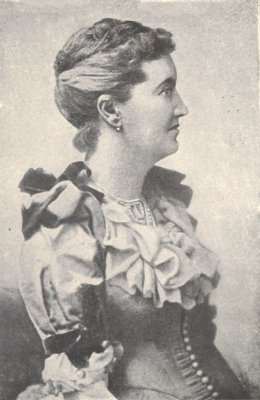
L. T. Meade was the pseudonym of Elizabeth Thomasina Meade Smith (1844–1914), a prolific writer of girls' stories. She was born in Bandon, County Cork, Ireland, daughter of Rev. R. T. Meade, of Nohoval, County Cork. She later moved to London, where she married Alfred Toulmin Smith in September 1879.

Ellen Buckingham Mathews (1849–1920) was a popular female English novelist during the late 19th and early 20th centuries. She was also known as Mrs Reeves after her marriage in 1877 to Dr. Henry Albert Reeves (1841–1914) but was best known under her pen name, Helen Mathers. She was born in Misterton, Somerset. Her first novel, "Comin' thro' the Rye" was published in 1875. It was partly based on people in her life and on her own early romantic experiences. She also acknowledged Rhoda Broughton as an early influence. She continued to write until her death.

Anne Dallas Dudley was an American activist in the women's suffrage movement. She was a national and state leader in the fight for women's suffrage who worked to secure the ratification of the 19th Amendment in Tennessee. After founding the Nashville Equal Suffrage League and serving as its president, she moved up through the ranks of the movement, serving as President of the Tennessee Equal Suffrage Association and then as Third Vice President of the National American Woman Suffrage Association, where she helped lead efforts to get the Nineteenth Amendment to the US Constitution ratified, giving women the right to vote nationwide. She is especially noted for her successful efforts to get the Nineteenth Amendment ratified in her home state of Tennessee, the final state necessary to bring the amendment into force.

The Woman's Bible is a two-part non-fiction book, written by Elizabeth Cady Stanton and a committee of 26 women, published in 1895 and 1898 to challenge the traditional position of religious orthodoxy that woman should be subservient to man. By producing the book, Stanton wished to promote a radical liberating theology, one that stressed self-development. The book attracted a great deal of controversy and antagonism at its introduction.

Belle Marshall KinneyScholz (1890–1959) was an American sculptor, born in Tennessee who worked and died in New York state.
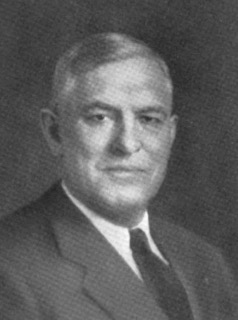
Bradley Walker was a Nashville attorney who, in his youth, was found to be naturally proficient at virtually any sport he tried, including football, baseball, track, boxing, tennis and golf— in all these sports he either set records or won championships or awards.

Ferdinand Emery Kuhn was a shoe merchant known as the "Father of the Knights of Columbus in the South." He was also president of the 1908 Southern Association champion Nashville Vols baseball team.
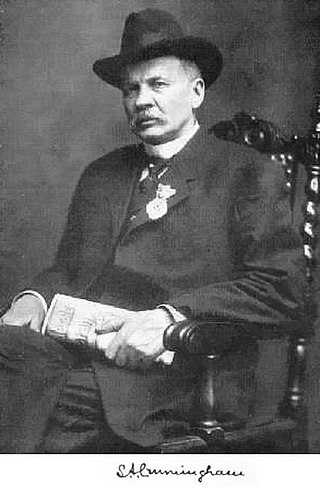
Sumner Archibald Cunningham was an American Confederate soldier and journalist. He was the editor of a short lived Confederate magazine called "Our Day" (1883-1884) published in New York. In 1893 he established the Confederate Veteran, a bimonthly magazine about veterans of the Confederate States Army until his death in 1913.

Hank Fort was an American singer and songwriter of the mid 20th century. She composed over 400 songs, including tracks recorded by Petula Clark and The Andrews Sisters, Patty Montana, Betsy Gay and "Written Guarantee" recorded by Betty Garrett and Larry Parks. One of her songs, "Look With Pride On Our Flag", was played at the second inauguration of Richard Nixon in 1973. In 1935 she established a dancing school in Nashville called "Fortnightly" which became a milestone for generations of youngsters coming of age to learn ballroom dancing and proper manners. It remained in existence nearly a quarter-century.

Judge Thomas Jefferson Latham was an American lawyer and businessman. Growing up in rural Weakley County, Tennessee in the Antebellum South, he became a lawyer and remained neutral during the American Civil War. In the post-bellum era, he served as the debt receiver of the City of Memphis, Tennessee and the president of the Memphis Water Company. He was an investor in land development in Tennessee and coal mining in Alabama. By the time of his death, he was a millionaire.
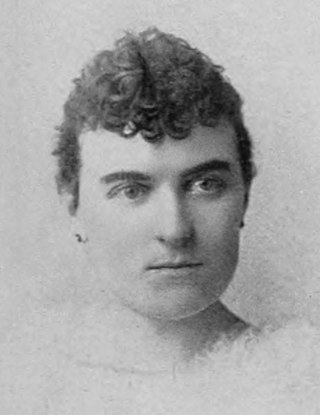
Eleanor "Nellie" O'Donnell McCormack was an American educator and clubwoman from the U.S. state of Ohio. She was a teacher and principal in the public schools of Tennessee and was elected superintendent of public schools for Shelby County. When elected, there were 148 schools in the county. She increased the number and brought them to a higher standard.
The Confederate Private Monument is a bronze sculpture of a private of the Confederate States Army in Centennial Park, Nashville, Tennessee, United States. Designed by George Julian Zolnay, it was commissioned by the Frank Cheatham Bivouac of the United Confederate Veterans in 1903, laid with Masonic honors in 1907, and dedicated in 1909. It was vandalized in June 2019.
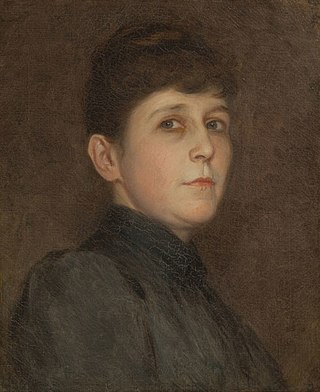
Ida Waugh was an American illustrator of children's literature who often collaborated with her lifelong companion, Amy Ella Blanchard.
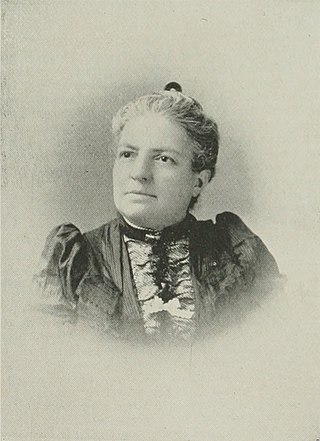
Esther T. Housh was a 19th-century American social reformer, author, and newspaper editor. While serving as national press superintendent of the Woman's Christian Temperance Union (WCTU), she instituted the National Bulletin. She was the editor of The Woman's Magazine, as well as the author of many temperance leaflets, and poems. Housh died in 1898.

Sara Ward Conley was an American artist from Nashville, Tennessee.

Elizabeth Fry Page was an American author and editor associated with the South. A co-founder of the Tennessee Woman's Press and Authors' Club, she served as the Poet Laureate of the Tennessee division of the Daughters of the American Revolution (D.A.R.) and that of the Tennessee Division, United Daughters of the Confederacy (UDC). She lectured on literary, musical and philosophical subjects. Coming from a long line of literary ancestors, Page's journalistic life began early, and she worked in many branches of her profession, as a journalist, magazine editor, essayist, short story writer and a producer of verse. Among her published works can be counted Vagabond Victor: Or, The Downfall of a Dog; a True Story (1908), Edward MacDowell, his work and ideals (1910), The romance of Southern journalism (1910), and A garden fantasy (1923). Page was also a veteran clubwoman.
Lavinia S. Goodwin was an American author and educator of the long nineteenth century. She was a charter member of the New England Woman's Press Association.